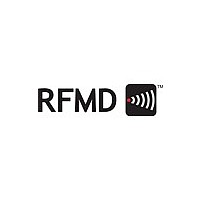RF2052TR7 RFMD, RF2052TR7 Datasheet - Page 15

RF2052TR7
Manufacturer Part Number
RF2052TR7
Description
IC RF MIXER PLL/VCO 32-QFN
Manufacturer
RFMD
Datasheet
1.RF2052TR7.pdf
(38 pages)
Specifications of RF2052TR7
Rf Type
UHF, VHF
Frequency
30MHz ~ 2.5GHz
Number Of Mixers
1
Gain
-2dB
Noise Figure
12dB
Secondary Attributes
Up/Down Converter
Current - Supply
75mA
Voltage - Supply
2.7 V ~ 3.6 V
Package / Case
32-VFQFN Exposed Pad
Lead Free Status / RoHS Status
Lead free / RoHS Compliant
Other names
689-1089-2
Available stocks
Company
Part Number
Manufacturer
Quantity
Price
Company:
Part Number:
RF2052TR7
Manufacturer:
RFMD
Quantity:
9 200
Write
Initially ENX is high and SDATA is high impedance. The write operation begins with the controller starting SCLK. On the first fall-
ing edge of SCLK the baseband asserts ENX low. The second rising edge of SCLK is reserved to allow the SDI to initialize, and
the third rising edge is used to define whether the operation will be a write or a read operation. In write mode the baseband will
drive SDATA for the entire telegram. RF2052 will read the data bit on the rising edge of SCLK.
The next 7 data bits are the register address, MSB first. This is followed by the payload of 16 data bits for a total write mode
transfer of 24 bits. Data is latched into RF2052 on the last rising edge of SCLK (after ENX is asserted high).
For more information, please refer to the timing diagram on page 14.
The maximum clock speed for a register write is 19.2MHz. A register write therefore takes approximately 1.3us. The data is
latched on the rising edge of the clock. The datagram consists of a single start bit followed by a ‘0’ (to indicate a write opera-
tion). This is then followed by a seven bit address and a sixteen bit data word.
Note that since the serial bus does not require the presence of the crystal clock, it is necessary to insert an additional rising
clock edge before the ENX line is set low to ensure the address/data are read correctly.
Read
Initially ENX is high and SDATA is high impedance. The read operation begins with the controller starting SCLK. The controller is
in control of the SDATA line during the address write operation. On the first falling edge of SCLK the baseband asserts ENX low.
The second rising edge of SCLK is reserved to allow the SDI to initialize, and the third rising edge is used to define whether the
operation will be a write or a read operation. In read mode the baseband will drive SDATA for the address portion of the tele-
gram, and then control will be handed over to RF2052 for the data portion. RF2052 will read the data bits of the address on
the rising edge of SCLK. After the address has been written, control of the SDATA line is handed over to RF2052. One and a half
clocks are reserved for turn-around, and then the data bits are presented by RF2052. The data is set up on the rising edge of
SCLK, and the controller latches the data on the falling edge of SCLK. At the end of the data transmission, RF2052 will release
control of the SDATA line, and the controller asserts ENX high. The SDATA port on RF2052 transitions from high impedance to
low impedance on the first rising edge of the data portion of the transaction (for example, 3 rising edges after the last address
bit has been read), so the controller chip should be presenting a high impedance by that time.
For more information, please refer to the timing diagram on page 14.
The maximum clock speed for a register read is 19.2MHz. A register read therefore takes approximately 1.4us. The address is
latched on the rising edge of the clock and the data output on the falling edge. The datagram consists of a single start bit fol-
DS100630
ENX
ENX
SCLK
SCLK
SDATA
SDATA
X
X
A6
A6
A5
A5
A4
7628 Thorndike Road, Greensboro, NC 27409-9421 · For sales or technical
support, contact RFMD at (+1) 336-678-5570 or sales-support@rfmd.com.
A4
A3
A3
A2
A2
A1
A1
A0
A0
D15
D15 D14
D14
D13
D13 D12
D12
D11
D11
D10
D10
D9
D9
D8
D8
D7
D7
D6
D6
D5
D5
D4
D4
RF2052
D3
D3
D2
D2
D1
D1
D0
D0
15 of 38



















